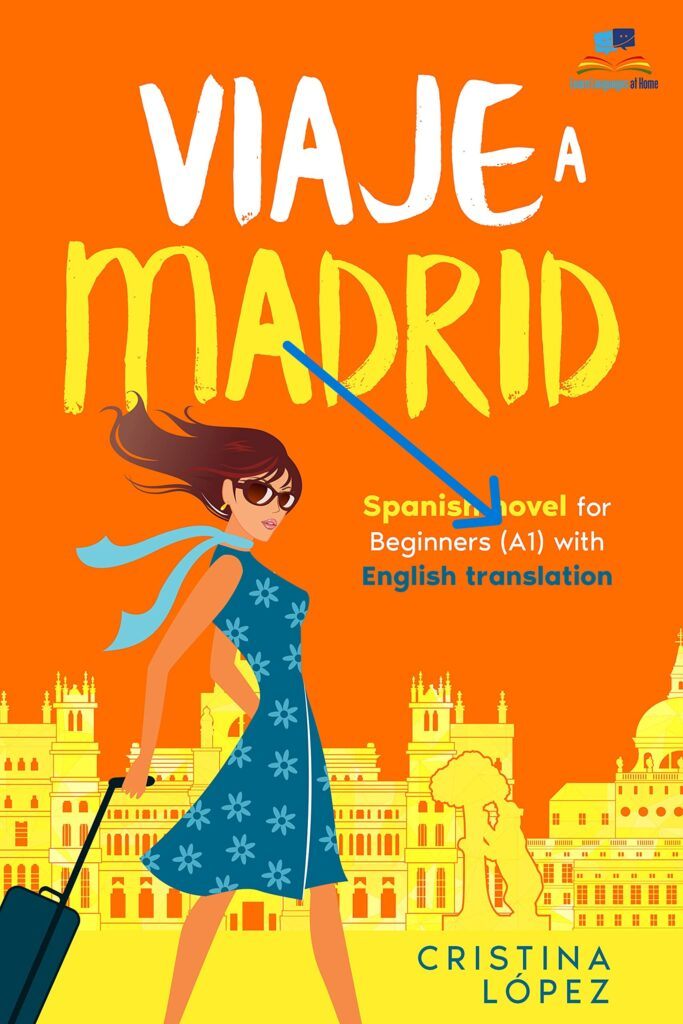Picking the right Spanish book for your level can make a huge difference in both how much you enjoy reading and how quickly your language skills grow. I’ve seen plenty of students get frustrated by books that are either too simple or way too tough. Sorting out where you stand and which books actually suit you will save you time, effort, and a bit of headache. Here’s my guide, as a Spanish tutor, to help you match your next Spanish read to your learning adventure.
Why Choosing the Right Spanish Book Matters
Going for a book that matches your Spanish level isn’t just about understanding words on the page. It’s the key to keeping motivated and actually making progress. Struggling through a book that’s too advanced can slow you down or make you want to give up. On the other hand, if everything is far too easy, you’ll finish the book but not stretch your abilities at all.
The Spanish book market has exploded with options lately; there are original texts, translations, graded readers, novels, comics, and even bilingual editions. That’s great news for learners because you’re almost guaranteed to track down something that matches exactly where you are in your adventure and what you’re genuinely interested in.

How to Figure Out Your Spanish Level
Before you decide what to read, a quick reality check on your level can point you to books that fit. Most publishers and teachers use these main categories:
- Beginner (A1–A2): You know some basics, can use common phrases, and put together simple sentences.
- Intermediate (B1–B2): You can chat about familiar topics, understand the main idea of texts, and express thoughts in a bit more depth.
- Advanced (C1–C2): You follow complex arguments, recognize subtle humor, and appreciate literary style or cultural references.
Many Spanish books, especially graded readers, even print these levels right on the cover or in the description, which is super handy. If you’re not sure where you stand, quick online tests can give you a rough idea. You just need to google “spanish tests online” and you will find many options.

The 5 Finger Rule: A Quick Hack for Book Selection
The classic “5 finger rule” is a way to check if a book fits your level without overthinking it. Here’s how it works: Pick up any Spanish book, flip to a full page, and start reading. Every time you stumble on a word you totally don’t know (and can’t guess from context), hold up one finger. If you put up more than five fingers by the end of the page, the book is probably too hard for everyday reading. If you put up fewer than two or three, it might be a little too familiar, and you’re ready to take things up a notch.
Beginner Spanish Books Worth Checking Out
When you start reading in Spanish, I recommend that you stick to graded readers that say “Beginner” or “A1” on the cover. Otherwise you might get frustrated. I don’t recommend books for children either, because even if they are in simpler language than adults it will still be an advanced book for you, if you are a beginner. You can read children’s books when you have reached an advanced beginner level, which would be an A2.
Here are some recommendations to get you started.
- First Spanish Reader for Beginners: Bilingual for Speakers of English. Graded Spanish Readers nº 1 & 2 (María Victoria De Stefano). This book will take you from zero to beginner level. It’s the book you need to get started. In addition, you will find the English translation of the stories so that you can immediately consult any doubts you may have about the meaning of the words.
- Pobre Ana (Blaine Ray). One of the best books to start from scratch with Spanish. You will find elementary vocabulary that you need to get to grips with from minute one.
- Short Stories in Spanish for Beginners (Olly Richards). They are perfect stories to start with in Spanish. Moreover, the stories are connected to each other, which makes them more interesting.
Intermediate Books: Take It Up a Notch
Once you’re at an intermediate level, you can try real novels, contemporary fiction, and deeper stories. However, you can still get a lot of benefit from graded reading for your level. Here’s what’s worth a look:
- El Principito (Antoine de Saint-Exupéry): a classic.
- Black Cat books: any of them.
- Short Stories in Spanish for Intermediate Learners (Olly Richards): A collection of eight captivating short stories for young and adult learners alike.
- Newspapers: e.g. El diario.es has practically all items free of charge.
Advanced Reads for C1 and Beyond
At this stage, you’re ready for poetry, classic literature, or books that play with the language. Here’s what’s worth exploring if you’re feeling brave:
- Trilogía La novia gitana | La red púrpura | La Nena (Carmen Mola ): This trilogy has become the biggest phenomenon of Spanish crime novels in recent years. If you like suspense, you must read it.
- La sombra del viento (Carlos Ruiz Zafón) : One of the most acclaimed Spanish novels of recent years.
- La casa de los espiritus (Isabel Allende): The author’s first novel, which has become a classic of Latin American literature.
- Ficciones (Jorge Luis Borges): Short stories full of clever language by one of the best writers the Spanish language has ever had.
- Poemas de otros (Mario Benedetti): If you want to read poetry in Spanish, you can start here. It is clear and, at the same time, moving poetry.
🎆 Big Savings This Independence Day — Don’t Miss Out!
From July 1st to July 4th, Rocket Languages is offering a massive 60% discount on all their online courses as part of their 4th of July celebration.
Whether you’re looking to boost your skills, try something new, or finally enroll in that course you’ve had your eye on, now’s the time to act. This promotion ends at midnight on July 4th or once 1,000 copies are sold.
Just use the code JULY4 at checkout and enjoy top-quality content at an unbeatable price.
Things To Think About Before Picking a Spanish Book
There are a few extra things to keep in mind as you browse:
- Stories you already know in English: classic fairy tales are a good example. But could be Harry Potter, The Chronicles of Narnia, Game of Thrones or another book that you really enjoyed. Books originally written in Spanish are great for authentic expressions, but translations of familiar books can feel easier if you already know the plot.
- Genre: What you’d choose in English is probably what you’ll like in Spanish too. If you wouldn’t read poetry in your native language, you probably won’t love it in Spanish either.
- Support materials: Bilingual editions, footnotes, or included vocabulary lists can really support your progress.
- Community recommendations: Wikis like r/Spanish Wiki and Spanish language forums are goldmines for crowdsourced book lists by level.
Getting the Most from Your Spanish Reading
Treat every Spanish book as a learning opportunity, not a test you can fail. Use a notebook to jot down cool phrases or words you like, and don’t stress about looking up every single new word (because context really helps).
As you move up levels, rereading old favorites in Spanish can show just how far you’ve come. The key is to stay curious and enjoy each step; your Spanish will thank you for it. Take your time, try new genres, and let your interests guide which books you pick next. With an open mind and a bit of patience, anyone can build strong Spanish reading skills over time.
Frequently Asked Questions
How do I choose the right book?
Start with shorter books and use the 5 finger rule. Pick something you’re genuinely interested in, and check if it fits your level based on the cover info or by flipping through a few pages.
What is a good first book to read in Spanish?
El Principito, Magic Tree House (La casa del árbol), or an A1/A2 graded reader by Paco Ardit are great starting points.
Is B2 fluent in Spanish?
B2 means you’re comfortable with most everyday situations and can hold up your end of the conversation on familiar topics. Many would see you as conversational, but true fluency—the kind where you rarely hesitate or search for words—usually comes around C1.
Is C1 Spanish fluent?
C1 is definitely fluent! At C1 you can read, write, listen, and speak at a near-native level, deal with complex texts, and keep up with advanced topics without much problem.
Is Duolingo actually good for Spanish?
Duolingo is handy for getting the basics, building vocabulary, and keeping up a daily habit. But to move into B2 or C1, you’ll need to add more real reading, listening, and conversation practice beyond the app.
Is Duolingo a B2 level?
A B2 certificate on Duolingo is a solid achievement, but most experts think the app tops out at around lower B1 in real-world communication. Still, it’s a good start as part of a bigger toolkit!
Guess what? When you click and buy through our links, you’re not just boosting your Spanish skills—you’re supporting us at no extra cost. It helps us keep delivering top-notch tips and resources to you. It’s a win-win for both of us!


